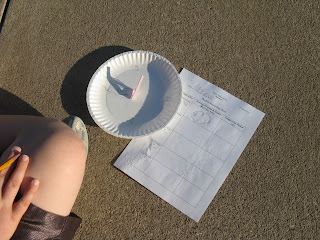Check out the students who dressed up for crazy outfit and hair day! We had such a wonderful Red Ribbon Week!
In science we have been learning about the reason for the seasons.
| In Winter, the Northern Hemisphere points away from the Sun. It spends more time in darkness (has longer nights) and the sun's rays are not as concentrated. | |
| | In Spring and Fall, the days are nearly equal in length for both the Northern and Southern Hemispheres. |
| In Summer, the Northern Hemisphere spends more time pointed toward the Sun, and the sun's rays are more concentrated and warmer. | |
| | Throughout the seasons, Earth is almost the same distance from the Sun: 93 million miles. It is closest to the Sun on about January 3rd (the middle of our winter!) and farthest from the Sun on about July 3. |
We have been learning about division in math. We know how to use base ten blocks to break apart a number to see how many equal groups we can make.

















































